What is a Condensate Drain Pan?
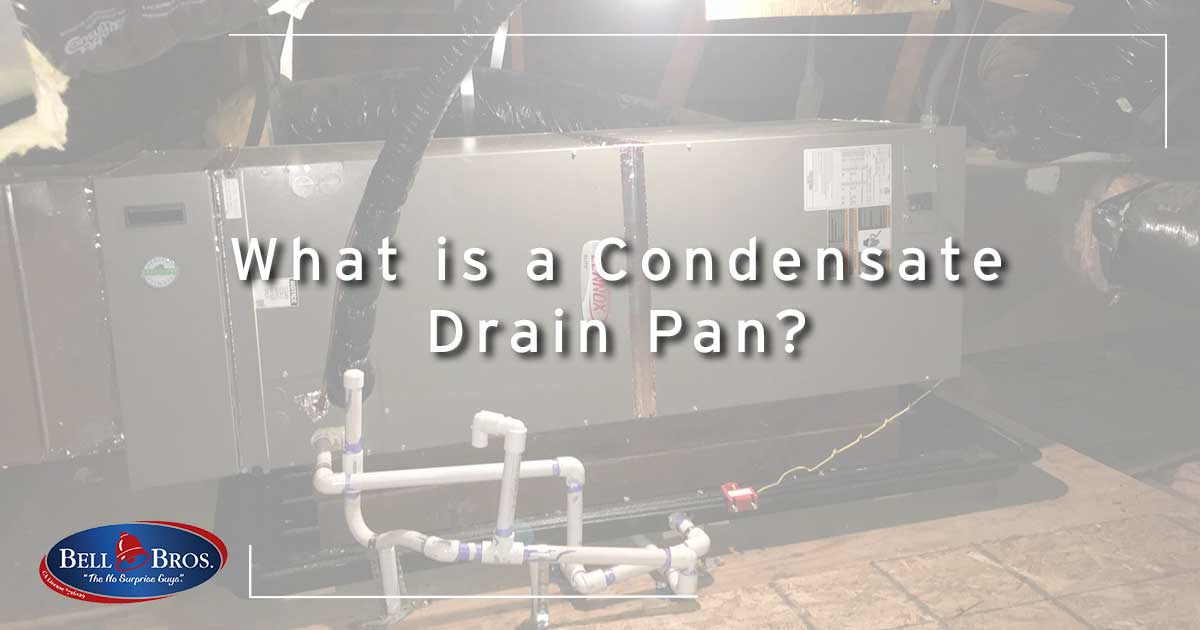 The condensate drain pan is a part of your HVAC system with a big job. It protects your home from water damage, mold growth, and system failure. Without it, you would be looking at a lot of HVAC and home problems.
The condensate drain pan is a part of your HVAC system with a big job. It protects your home from water damage, mold growth, and system failure. Without it, you would be looking at a lot of HVAC and home problems.
Most of our Sacramento and East Bay owners don’t know what a condensate drain pan is. Today, the experts at Bell Brothers are telling you what it is, how it works, and why it’s so important.
How does a condensate drain pan work?
The air conditioning process can produce a lot of excess moisture. In addition to stripping heat from the air, a central air system also keeps humidity levels in check.
The condensate drain pan makes sure all that excess humidity and water has a safe place to go. When we say safe place, we mean a place where it can be disposed of safely and not do any harm to your home.
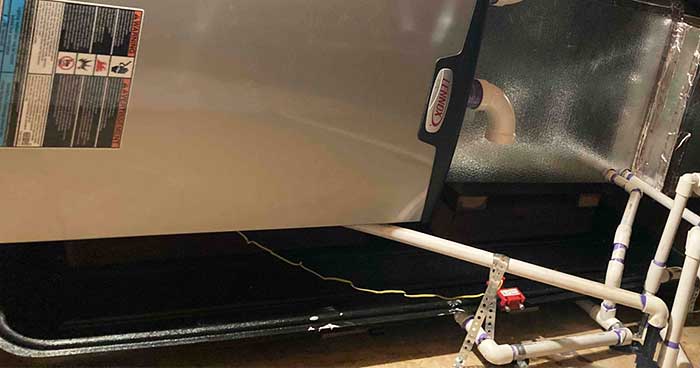
During the cooling process, the evaporator coil fills with cold refrigerant. This cold refrigerant pulls heat and humidity from the air found in your home. Once the heat is pulled from the air, a nice cool breeze can circulate through your home.
This process of heat transfer generates a lot of condensation. And that condensation needs a place to go. Think of it as a glass of ice water on a hot day. When exposed to a warm environment, beads of water appear and start to drip down the sides of the glass.
The same thing happens with the evaporator coil. This is why we need the condensate drain pan. The drain pan catches all the condensation and sends it through a waste tube. This waste tube makes sure the condensation goes outside the home.
Depending on how much you use the AC, it can generate between 5 and 20 gallons of condensation per day.
Where is the condensate drain pan located?
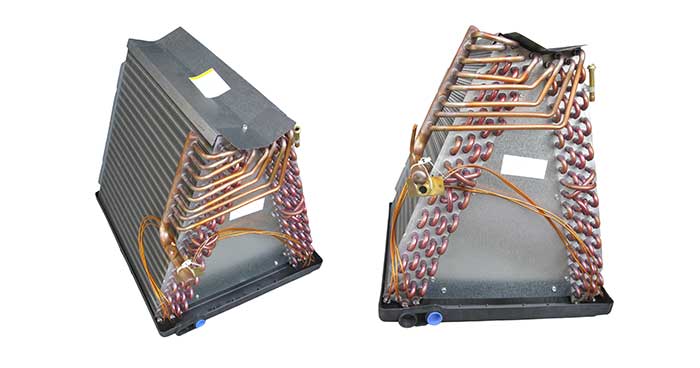
The condensate drain pan is part of the evaporator coil. It sits directly underneath the coil so it can catch any and all moisture that comes off it.
The exact location of the pan depends on how your AC is installed:
Vertical furnace installation or application
- These furnaces are in an upright position and commonly found in utility closets or garages. On these models, the evaporator coil is above the furnace and the drain pan is directly underneath the coil.
Horizontal furnace installation or application
- Oftentimes, a furnace in an attic will have a horizontal installation, meaning it is on its side. In this case, the evaporator coil sits beside the furnace and the condensate drain pan sits underneath. Horizontal furnaces will typically have a second drain pan.
Why does the horizontal application have a second drain pan?
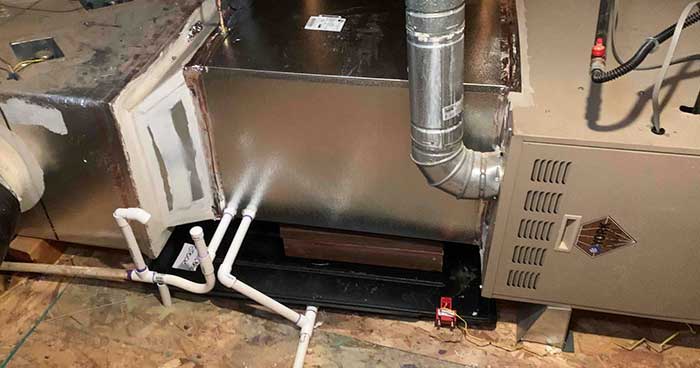
Attic furnaces traditionally have a backup drain pan. It is in place for the protection of your unit and your home.
For horizontal furnaces, air flows from side to side, not up and down. So, if something were to go wrong with your system, water will drip from the entire system.
And as we mentioned above, some AC systems can generate up to 20 gallons of condensation per day. That much water can do serious damage to your drywall, ceiling, and any wood. The second drain pan is an added layer of protection. It also has its own drip line.
The secondary drip line can usually be seen from the outside of the house. It’s visible so the homeowner knows their system is compromised and it’s time to call someone as soon as possible.
How does the condensate drain pan get damaged?
Just like everything else in your HVAC system, with time and use, the condensate drain pan can fail.
Older drain pans were made of metal. However, metal can rust and corrode. Recent pans are made from a strong plastic.
The newer, more durable, pans have a lifespan of 5 to 10 years. The only issue is that they are part of the evaporator coil. To replace the condensate drain pan, you’ll need to replace the entire evaporator coil.
What damages the pan?
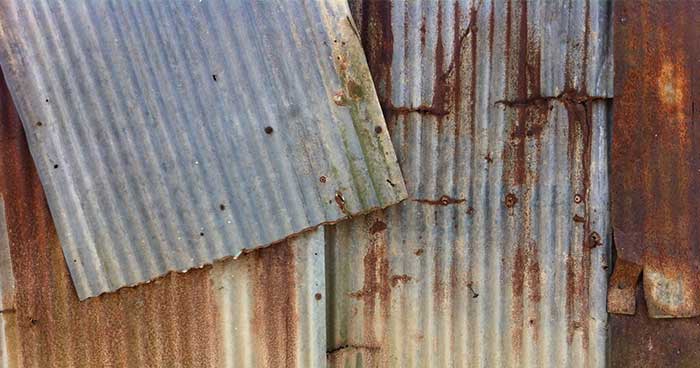
Unfortunately, the heating process can do some damage to the condensate drain pain. Seeing as how the furnace provides your home with warm air, this could be a problem.
The drain pan collects any excess water and condensation created during the air conditioning process. Despite this, during the winter, the drain pan gets hit with a rush of warm air during every heating cycle. The direct heat can pull any bit of moisture from the pan, which could lead to cracks and leaks.
A cracked pan can’t hold water. Instead, during the spring and summer, the pan will drip water into the furnace or allow water to pool at the bottom of the evaporator coil.
The condensate drain line can also clog. This happens when debris gets into the line and creates a backup.
The most common culprit is a dirty air filter. When the air filter is unable to keep dust and other debris out of the HVAC system, backups and clogs happen. This is a problem because the condensate drain pan is shallow.
It’s not made to hold a lot of water. The drain pan is engineered to be constantly cycling water, not holding still water. When a line is backed up, water can overflow into the furnace.
A clogged condensate line, a cracked condensate drain pan, or a soggy furnace can lead to many unwanted issues that can include:
- Microbiological growth
- Safety hazards
- Low indoor air quality
- Internal buildup
- AC repairs
- Higher energy expenditure
- Smelly air
- Water damage to the home
Water gathering anywhere in your HVAC system can present a serious threat to the health and safety of your system and your home. If you suspect this, call an HVAC professional as soon as possible.
Care for Your Cooling System with the Experts at Bell Brothers
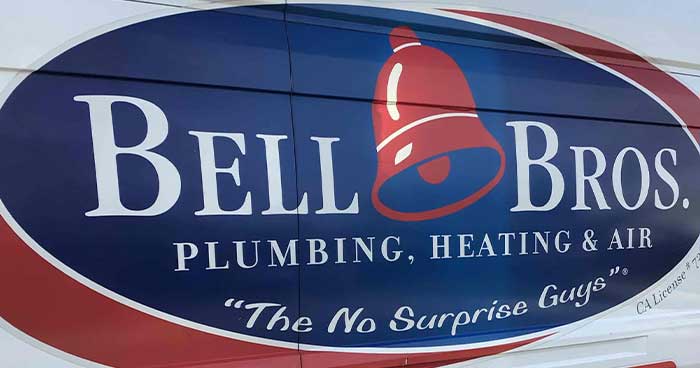
Bell Brothers is the preferred provider of HVAC and plumbing services in Sacramento, Stockton, Vacaville, and the East Bay.
Our techs are expertly trained and ready to handle any situation they may come across. To meet your Bell Brothers HVAC specialist, dial the number at the top of the screen, or click here to book an appointment online.

